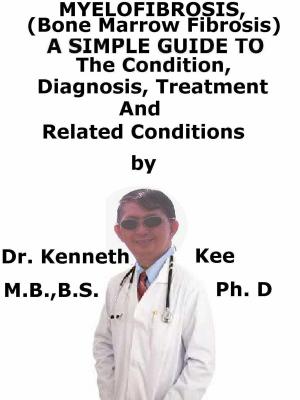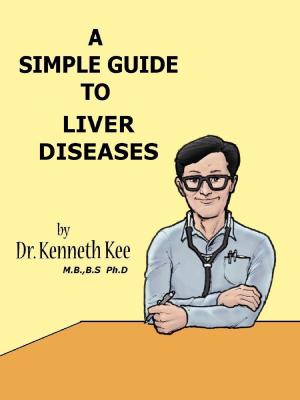Fanconi Anemia, A Simple Guide To The Condition, Diagnosis, Treatment And Related Conditions
Nonfiction, Health & Well Being, Medical, Specialties, Internal Medicine, Hematology, Surgery| Author: | Kenneth Kee | ISBN: | 9781370008391 |
| Publisher: | Kenneth Kee | Publication: | June 23, 2017 |
| Imprint: | Smashwords Edition | Language: | English |
| Author: | Kenneth Kee |
| ISBN: | 9781370008391 |
| Publisher: | Kenneth Kee |
| Publication: | June 23, 2017 |
| Imprint: | Smashwords Edition |
| Language: | English |
Fanconi anemia is an inherited disorder that mainly affects the bone marrow.
It leads to decreased production of all types of blood cells.
Fanconi anemia (FA) is a genetic disorder that eventually leads to bone marrow failure.
The bone marrow is responsible for making 3 different types of blood cells in the body.
These are red blood cells, which bring oxygen to the tissues and organs, white blood cells, which fight infections, and platelets, which promote blood clotting to stop bleeding.
It is normal for the blood cells to die.
If the bone marrow is not replacing dead blood cells, the person will have bone marrow failure
FA is a very severe disease and has permanent complications, which may be:
1.Anemia
2.Birth Defects of bone, eye, ear, skin, kidney and heart
3.Cancer especially leukemia and mouth cancers
FA is a recessive gene disorder.
This indicates the parents both have to have the defective FA gene for a person to develop FA
Abnormalities in those 19 genes are responsible for 95 % of FA cases.
It is the most frequent of a group of relatively rare diseases called the inherited bone marrow failure syndromes (IBMFS).
The disorder is most often diagnosed in children between 2 and 15 years old.
When a person does not have a sufficient number of blood cells he or she will begin to experience:
- Aplastic Anemia
The symptoms of anemia are:
a. Dizziness,
b. Headaches, and
c. An inability to keep the hands and feet warm. - Birth Defects
Certain types of birth defects will indicate that the infant has FA, such as:
a. Bone defects, especially involving the thumbs and arms
b. Eye and ear defects
c. Skin discoloration
d. Kidney problems
e. Congenital heart defects - Developmental Problems
Developmental problems can be:
a. Low birth weight
b. Poor appetite
c. Delayed growth
d. A smaller-than-normal height
e. A smaller-than-normal head size
f. Intellectual disability
Symptoms in Adults
Adults who are diagnosed later in life will normally have a completely different set of symptoms.
The symptoms in adults will normally involve the sexual organs or the reproductive system.
The symptoms in women are: - Periods that occur later than normal
- Fertility issues
- Frequent miscarriages
- Early menopause
- Smaller-than-normal genitals
Men with FA may have: - Fertility issues and
- Smaller-than-normal genitals.
People with Fanconi anemia have less numbers of white blood cells, red blood cells, and platelets (cells that help the blood clot).
Not enough white blood cells can result in infections.
A lack of red blood (anemia) cells may result in fatigue.
The lesser amount of platelets may lead to excessive bleeding.
Women who have a family history of FA should have genetic testing of their unborn baby.
This can be done through amniocentesis and chorionic villus sampling (CVS).
Chromosome breakage studies can also be done using CVS.
If the child tests positive for the FA gene, they will be monitored for other signs of the disorder.
Bone marrow biopsy or aspiration shows progressively hypo-cellular marrow with loss of myeloid and erythroid precursors and megakaryocytes, ultimately becoming typical of aplastic anemia
Full blood count (FBC) may show macrocytosis with mild anemia through to pan-cytopenia.
Initial presentation may be with isolated thrombocytopenia or leucopenia
The symptoms of FA can be treated but there is no cure for FA.
People with mild to moderate blood cell changes do not need a transfusion
Medicines called growth factors (such as erythropoietin, G-CSF, and GM-CSF) can improve blood counts
A bone marrow transplant can cure blood count of FA
Most people respond to hormone therapy.
TABLE OF CONTENT
Introduction
Chapter 1 Fanconi Anemia
Chapter 2 Causes
Chapter 3 Symptoms
Chapter 4 Diagnosis
Chapter 5 Treatment
Chapter 6 Prognosis
Chapter 7 Aplastic Anemia
Chapter 8 Hemolytic Anemia
Epilogue
Fanconi anemia is an inherited disorder that mainly affects the bone marrow.
It leads to decreased production of all types of blood cells.
Fanconi anemia (FA) is a genetic disorder that eventually leads to bone marrow failure.
The bone marrow is responsible for making 3 different types of blood cells in the body.
These are red blood cells, which bring oxygen to the tissues and organs, white blood cells, which fight infections, and platelets, which promote blood clotting to stop bleeding.
It is normal for the blood cells to die.
If the bone marrow is not replacing dead blood cells, the person will have bone marrow failure
FA is a very severe disease and has permanent complications, which may be:
1.Anemia
2.Birth Defects of bone, eye, ear, skin, kidney and heart
3.Cancer especially leukemia and mouth cancers
FA is a recessive gene disorder.
This indicates the parents both have to have the defective FA gene for a person to develop FA
Abnormalities in those 19 genes are responsible for 95 % of FA cases.
It is the most frequent of a group of relatively rare diseases called the inherited bone marrow failure syndromes (IBMFS).
The disorder is most often diagnosed in children between 2 and 15 years old.
When a person does not have a sufficient number of blood cells he or she will begin to experience:
- Aplastic Anemia
The symptoms of anemia are:
a. Dizziness,
b. Headaches, and
c. An inability to keep the hands and feet warm. - Birth Defects
Certain types of birth defects will indicate that the infant has FA, such as:
a. Bone defects, especially involving the thumbs and arms
b. Eye and ear defects
c. Skin discoloration
d. Kidney problems
e. Congenital heart defects - Developmental Problems
Developmental problems can be:
a. Low birth weight
b. Poor appetite
c. Delayed growth
d. A smaller-than-normal height
e. A smaller-than-normal head size
f. Intellectual disability
Symptoms in Adults
Adults who are diagnosed later in life will normally have a completely different set of symptoms.
The symptoms in adults will normally involve the sexual organs or the reproductive system.
The symptoms in women are: - Periods that occur later than normal
- Fertility issues
- Frequent miscarriages
- Early menopause
- Smaller-than-normal genitals
Men with FA may have: - Fertility issues and
- Smaller-than-normal genitals.
People with Fanconi anemia have less numbers of white blood cells, red blood cells, and platelets (cells that help the blood clot).
Not enough white blood cells can result in infections.
A lack of red blood (anemia) cells may result in fatigue.
The lesser amount of platelets may lead to excessive bleeding.
Women who have a family history of FA should have genetic testing of their unborn baby.
This can be done through amniocentesis and chorionic villus sampling (CVS).
Chromosome breakage studies can also be done using CVS.
If the child tests positive for the FA gene, they will be monitored for other signs of the disorder.
Bone marrow biopsy or aspiration shows progressively hypo-cellular marrow with loss of myeloid and erythroid precursors and megakaryocytes, ultimately becoming typical of aplastic anemia
Full blood count (FBC) may show macrocytosis with mild anemia through to pan-cytopenia.
Initial presentation may be with isolated thrombocytopenia or leucopenia
The symptoms of FA can be treated but there is no cure for FA.
People with mild to moderate blood cell changes do not need a transfusion
Medicines called growth factors (such as erythropoietin, G-CSF, and GM-CSF) can improve blood counts
A bone marrow transplant can cure blood count of FA
Most people respond to hormone therapy.
TABLE OF CONTENT
Introduction
Chapter 1 Fanconi Anemia
Chapter 2 Causes
Chapter 3 Symptoms
Chapter 4 Diagnosis
Chapter 5 Treatment
Chapter 6 Prognosis
Chapter 7 Aplastic Anemia
Chapter 8 Hemolytic Anemia
Epilogue















